
-
Hitta rätt mat för ditt husdjurGör det här testet för att se vilket foder som kan vara bäst för din pälskling.Hitta rätt mat för ditt husdjurGör det här testet för att se vilket foder som kan vara bäst för din pälskling.Utvalda produkter
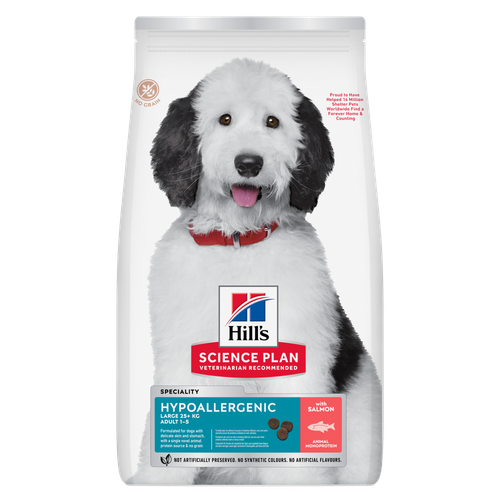 Hypoallergeniskt hundfoder för vuxna hundar med lax
Hypoallergeniskt hundfoder för vuxna hundar med laxHILL'S SCIENCE PLAN Hypoallergenic Large Breed Adult hundfoder med lax är ett komplett foder för vuxna hundar av stora raser i åldern 1–5 år. Det är särskilt framtaget för hundar med känslig hud och mage, med begränsade mängder högkvalitativa och nya proteinkällor samt utan spannmål.
Handla nu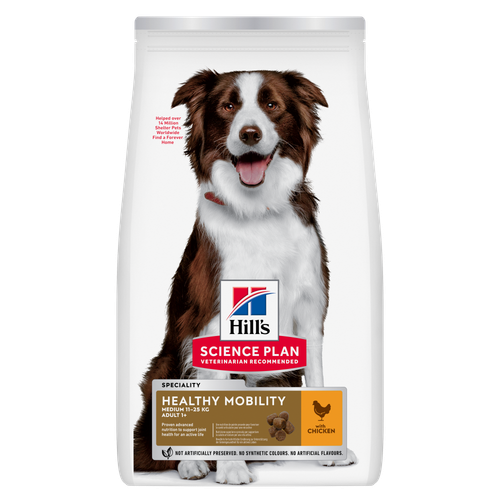 Healthy Mobility Medium Adult Hundfoder
Healthy Mobility Medium Adult HundfoderHill's Science Plan Healthy Mobility Medium Breed Adult Hundfoder med kyckling erbjuder en avancerad nutrition för att stödja ledhälsa och förbättra rörligheten. provides advanced nutrition to support joint health and improve mobility.
Handla nu Hypoallergenic Adult Hundfoder
Hypoallergenic Adult HundfoderHill's Science Plan Hypoallergenic Adult våtfoder med lax är ett komplett helfoder av högsta kvalitet för alla vuxna hundar från 1 år och uppåt. Detta läckra våtfoder i burk är speciellt sammansatt för hundar med känslig hud och mage. Den innehåller en enda animalisk proteinkälla och är spannmålsfri.
Handla nuHälsotillståndUtvalda produkter Hill's Science Plan SENIOR VITALITY KATTFODER Kyckling, med laxHandla nu
Hill's Science Plan SENIOR VITALITY KATTFODER Kyckling, med laxHandla nu Hill's Science Plan Mature Adult Kattfoder Tonfisk
Hill's Science Plan Mature Adult Kattfoder TonfiskHill's Science Plan Adult kattfoder med lax är ett helfoder för äldre katter, speciellt utformat med ActivBiome+ Multi-Benefit teknologi.
Detta foder främjar ett värdigt åldrande hos katter och innehåller en synergistisk blandning av ingredienser som bidrar till att upprätthålla energi- och aktivitetsnivån.Handla nu Sterilised Kattungefoder
Sterilised KattungefoderHill's SCIENCE PLAN Sterilised Kitten kattungefoder är skapat med Hill´s unika förståelse för de specifika behov som kastrerade kattungar har. Det bidrar med hög proteinkvalitet för muskelutveckling, med kontrollerat fett för att förebygga risk för övervikt efter kastrering. Dessutom har det en unik blandning av antioxidanter för att främja ett hälsosamt immunsystem för att stöjda din kattunges tillväxt.
Handla nu -
Till hundägare
- Tips och artiklar
-
Hälsokategori
- Vikthantering
- Miljö- och foderöverkänslighet
- Urinvägar
- Matsmältning
- Leder
- Njurar
-
Hundens livsstadium
- Näring för valpar
- Näring för vuxna katter
- Näring för seniorer
Till kattägare- Tips och artiklar
-
Hälsokategori
- Vikthantering
- Hud- & foderöverkänslighet
- Urinvägar
- Matsmältning
- Njurar
-
Kattens livsstadium
- Näring för kattungar
- Näring för vuxna
- Näring för seniorer
Utvalda artiklar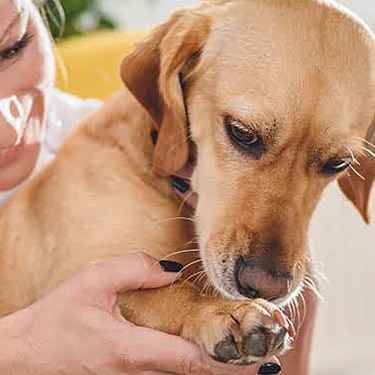 Virtual Vet Visits: What You Need to Know
Virtual Vet Visits: What You Need to KnowLearn the ins and outs of a televet appointment before you talk to a vet online.
Läs mer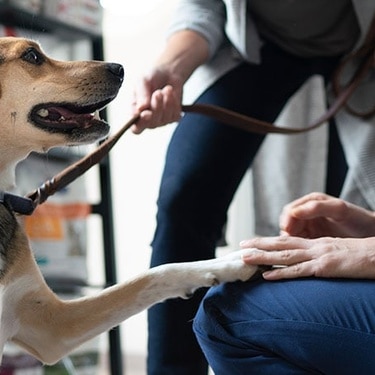 Viktförändringar hos hundar och katter - kan det vara ett sköldkörtelproblem?
Viktförändringar hos hundar och katter - kan det vara ett sköldkörtelproblem?En viktförändring kan tyda på ett problem med sköldkörteln. Läs mer om tecken, orsaker och vad du kan göra åt det.
Läs mer Kristaller och stenar i hund- och katturin
Kristaller och stenar i hund- och katturinLäs om orsaker till och behandlingar av kristaller i hund- och katturin för att bibehålla hundens eller kattens hälsa. För expertråd om urinvård, besök Hill's Pet Sverige.
Läs mer -


If your dog spends a lot of time outdoors, he's at high risk of picking up ticks–those multi-legged, disease-carrying parasites that like to hide in the fur and attach themselves to the skin. Learning proper tick removal and ways of preventing ticks in the first place are crucial for stopping the spread of disease not only to your dog but to yourself and your family.
Dangers of Ticks
Although such a tiny insect might seem harmless at first glance, the American Kennel Club Canine Health Foundation (AKCCHF) estimates that thousands of dogs are infected each year with tick-borne diseases, such as Lyme disease, canine ehrlichiosis, canine anaplasmosis, and Rocky Mountain spotted fever, some of which are transmissible to humans. Tick bites can also become infected and cause soreness and parasitic dermatitis, especially when the tick hasn't been properly removed. Although field dogs, outdoor dogs, and dogs that spend a lot of time in wooded areas are the most at risk, all dogs could potentially come into contact with ticks at some point, so regular tick checks are a good habit for all dog parents to acquire.
Keep an eye on your dog. If you notice that he is scratching or chewing at a particular spot on his body, he might have picked up a tick, and it is a good idea to check the spot where he is itching. For dogs with lots of hair, special combs can come in handy to comb the hair away for you to more easily inspect. A second person to help in this situation can come in handy too.


Smakrika tips
Valpar kan behöva flera besök under sitt första år för vaccinationer. Vuxna hundar har i allmänhet nytta av årliga kontroller, medan seniora hundar eller hundar med särskilda behov kan behöva mer frekventa besök.
Tick Removal
If possible, especially if it's your first time dealing with tick removal, the AKCCHF recommends taking your dog to a veterinarian or a vet technician to ensure it's done properly and avoid infection. If you decide to remove the tick yourself, PetMD advises wearing disposable gloves and using tweezers to handle the tick–never let it come into contact with your skin. Using the tweezers, grasp it as close to the head as possible and pull straight out without twisting or squeezing the body.
Once it's out, put the tick in a small container of rubbing alcohol to kill it. Be sure that the head is still attached to the body. If you suspect that the head is still embedded in your dog's skin, you should consult your vet and keep an eye on it for infection. Treat the bite area by cleaning and disinfecting it.

Afterward, keep a watchful eye on your dog for any signs of illness. Signs and symptoms of tick-borne illnesses may take anywhere from seven to twenty-one or more days to appear, according to the Centers for Disease Control. Symptoms vary from illness to illness, so if you notice anything unusual about your dog during this time, be sure to contact your vet right away.
If you do find a tick hiding on your dog somewhere be sure to check yourself as well as the rest of your family for additional parasites as well. This will help keep your family from getting any diseases, as well as the parasite jumping hosts and getting back onto your dog.
Preventing Ticks
Of course, prevention is the best medicine. Treat your yard for ticks and other insects, and trim bushes and other tick-friendly habitats. Get into the habit of checking your pup for ticks after every outdoor excursion, and ask your vet to do a tick check at every exam. Tick prevention for your dog is available in several forms, including sprays and powders, shampoos and dips, collars, oral pills, and topical treatments. Dogs tend to have varied reactions to chemical treatments, so discuss with your vet which methods are best for your dog.
Ticks are definitely something to take seriously, but don't let their seriousness alarm you. By following these prevention guidelines and keeping a diligent eye out for these parasites on your dog, you'll go a long way toward mitigating the health risk that these parasites pose to your dog and your family.


Jean Marie Bauhaus är djurägare, bloggare och romanförfattare från Tulsa, Oklahoma, där hon vanligtvis skriver under överinseende av ett knä med pälsklingar.
Relaterade produkter
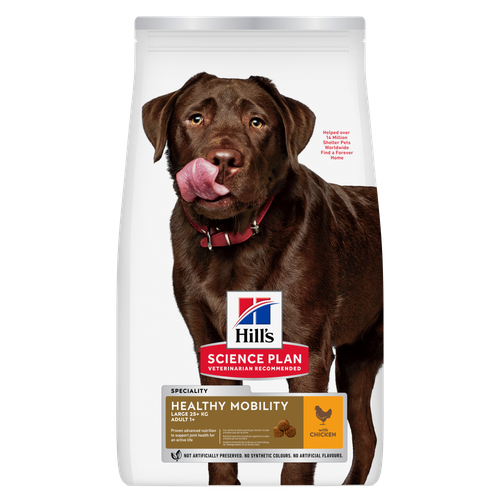
Hill's Science Plan Healthy Mobility Large Breed Adult Hundfoder med Kyckling erbjuder en avancerad nutrition för att stödja ledhälsan och förbättra rörligheten.

Hill's Science Plan Hypoallergenic Adult våtfoder med lax är ett komplett helfoder av högsta kvalitet för alla vuxna hundar från 1 år och uppåt. Detta läckra våtfoder i burk är speciellt sammansatt för hundar med känslig hud och mage. Den innehåller en enda animalisk proteinkälla och är spannmålsfri.

HILL'S SCIENCE PLAN Hypoallergenic Large Breed Adult hundfoder med lax är ett komplett foder för vuxna hundar av stora raser i åldern 1–5 år. Det är särskilt framtaget för hundar med känslig hud och mage, med begränsade mängder högkvalitativa och nya proteinkällor samt utan spannmål.

Hill's Science Plan Healthy Mobility Medium Breed Adult Hundfoder med kyckling erbjuder en avancerad nutrition för att stödja ledhälsa och förbättra rörligheten. provides advanced nutrition to support joint health and improve mobility.
Relaterade artiklar
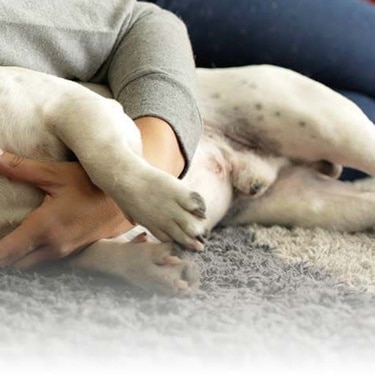
Signs of a healthy dog include healthy skin and a healthy coat. This article provides information on the appearance of a healthy coat, the importance of grooming, brushing, bathing and nutrition in the care of maintaining a healthy dog.

Hundar kan lida av känslig mage och är då benägna att utveckla problem med matsmältningen. Vissa raser kan dessutom vara mer känsliga än andra.

Though it may seem like your four-legged friend loves nothing more than to nap on the couch, dogs need regular exercise to stay healthy just like people do.

Just like every other pet owner, vets are responsible for giving their pets the best possible nutrition, exercise and care needed to keep them healthy and happy.

Sätt din hund på diet utan att den märker det
Vår kalorifattiga sammansättning hjälper dig att kontrollera din hunds vikt. Den innehåller högkvalitativt protein för att bygga slanka muskler och är tillverkad med noggrant utvalda ingredienser för en smakrik och näringsrik måltid. Kliniskt bevisade antioxidanter, vitamin C+E, bidrar till ett friskt immunsystem.
Sätt din hund på diet utan att den märker det
Vår kalorifattiga sammansättning hjälper dig att kontrollera din hunds vikt. Den innehåller högkvalitativt protein för att bygga slanka muskler och är tillverkad med noggrant utvalda ingredienser för en smakrik och näringsrik måltid. Kliniskt bevisade antioxidanter, vitamin C+E, bidrar till ett friskt immunsystem.

